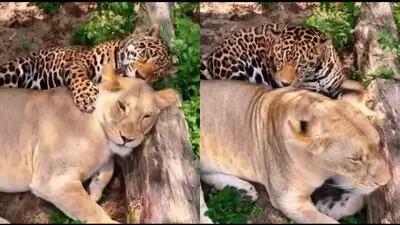Recommended Stories
The ancient rhino, whose remains were found in southwest Tibet , is believed to be the oldest specimen of its kind yet found and was well-adapted for a frosty life in the Himalayas about one million years before the Ice Age.
"We think that the Tibetan Plateau may be a cradle for the origins of some of the Ice Age giants," study author Xiaoming Wang, from the Natural History Museum of Los Angeles said.
The rhino, dubbed Coelodonta thibetan, was equipped with a built-in snow shovel on its face that would have allowed it to brush away snow and find vegetation beneath. It suggests that the woolly rhinoceros was well-adapted for a cold, icy life in the Himalayas that may have left it perfectly poised to spread across Asia when global temperatures plummeted, ushering in the Ice Age, the researchers said. According to Wang, such large and furry mammals ruled the world during Earth`s cold snap from 2.6 million to about 12,000 years ago. "It just happens to have the right environment to basically let animals acclimate themselves and be ready for the Ice Age cold."
The researchers, who detailed their study in the journal Science, believe the rhino may have belonged to an animal that weighed 1.2 to 1.4 tonnes, close to the size of modern rhinos and about 10% smaller than woolly rhinos found a million years later during Ice Age.












